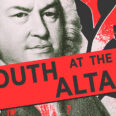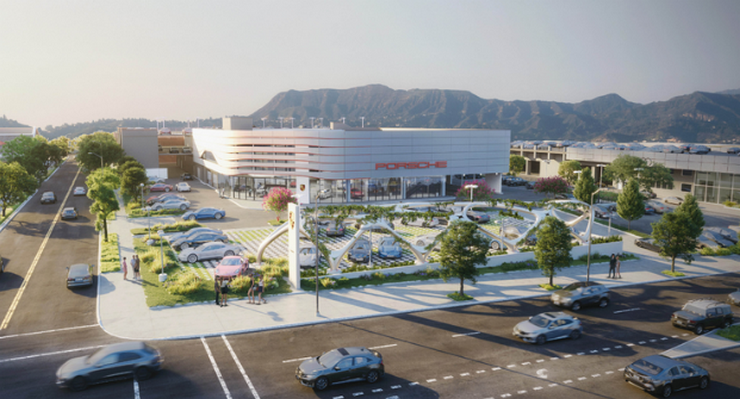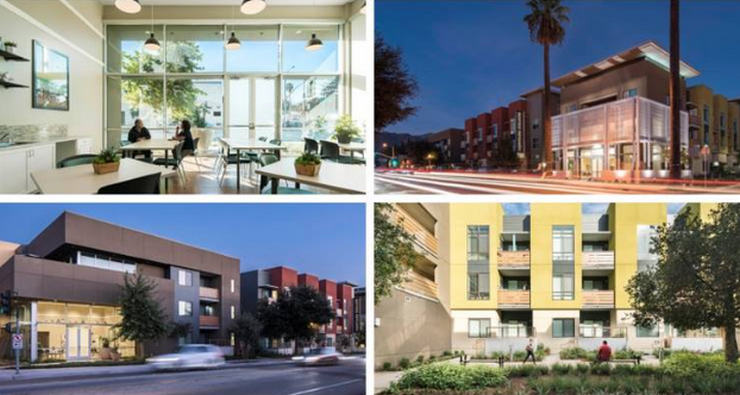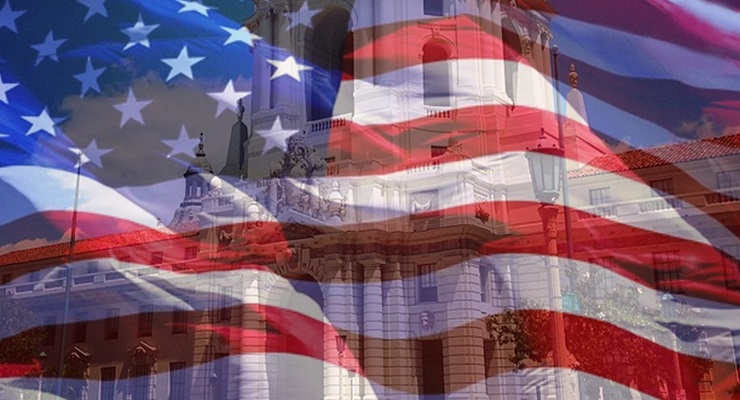The author alone is responsible for opinions and information presented in this essay. Pasadena Now does not take editorial positions; rather, we serve the community by offering this forum for opinion and debate, open to all. We encourage your comments!
A joke this writer has thought of spreading around town is that Pasadena ’s dependence on imports of so-called “dirty coal” power from Utah and Rose Parade fans from everywhere has now been upstaged by the importing of an economic stimulus from D.C. Which raises the more serious question, “what or which stimulus package would be best for Pasadena ?”
The amount, timing, and millstones that will be involved with any Federal stimulus package that might filter down to Pasadena have not been definitively decided upon yet. Hopefully, what will trickle down to Pasadena will be in the form of a block grant that local governments can target to the unique needs of each city. But it would behoove Pasadena to begin a forward planning process given that President Obama has rightly emphasized the importance of infrastructure which typically takes significant lead time to implement.
Already Pasadena has launched its own home-grown economic stimulus with the Pasadena Unified School District ’s (PUSD) $330 million Measure TT bond issue; which is mainly for deferred maintenance projects and superfluous non-building code items with targeted contracts to political campaign contributors and insiders. Use of Federal aid for what would amount to minor maintenance projects, social services, funding for the arts, etc. promises to put a selected few back to work, but fails to create new economic possibilities for the bulk of the populace who indirectly are funding this. Due to the past history of Pasadena with school busing and underperforming schools, investments in public school facilities have not had the effect of increasing the property tax base as it has most everywhere else.
In short, such projects will not increase the Gross City Product or raise the property tax base – two key baseline measures the City should focus on in any real stimulus. But Pasadena doesn’t even track its own Gross City Product because it hasn’t updated its Economic and Development Plan as part of its General Plan since 1987. Will Pasadena continue to fund only insiders for narrowly-scoped projects of dubious stimulus value to the larger economy or will it allocate money for grander projects in keeping with the history of Pasadena ?
President Obama’s focus on public goods, not only politicized goods, is right. Pasadena history is filled with such projects.
In 1900 Pasadena Mayor Horace Dobbins finished the first link of his innovative California Cycleway from the Green Hotel to Raymond Hill, which unfortunately was not extended into Los Angeles because of competition from the railway and automobiles.
In 1913 the Colorado Street Bridge was built. During the Stock Market Crash of 1929 and the Great Depression of the 1930’s, the Colorado Street Bridge became infamously known as *”Suicide Bridge” for all those committing suicide by jumping off it. In 1993 the bridge was restored after falling into disrepair with $24 million from the Federal Bridge Repair and Maintenance Fund. Today, the bridge is an historical landmark and a local icon on which celebrations are held.
Financed by the State of California in 1940, the Arroyo Seco Parkway , the first freeway in California , linked Pasadena to the jobs center of the City of Los Angeles . The parallel Arroyo Seco Flood Control Project, including Devil’s Gate Dam, was built by the Works Progress Administration. This flood control system protected the freeway from flood damage and allowed the basin behind the dam to become a spreading ground and spillway for replenishment of groundwater in the Raymond Basin serving several cities.
The Jet Propulsion Laboratory was established with Federal funds in 1930 at the head of the Arroyo Seco, which spawned the Aeroject Corporation. Today, JPL has some 5,000 employees and numerous contractors involved in the construction and operation of planetary spacecraft.
Pasadena has talked of a $100 million upgrade to its electric transmission system, such as increasing the capability of interconnection lines and cross-town tie lines, in order to import more power when needed. Pasadena ’s peak load demand for power is over 300 megawatts, but to meet this peak load greater in-city capacity is needed. New transmission lines would be more energy efficient and thus may help meet AB 32 mandates. This project would be consistent with President Obama’s focus on infrastructure.
Some five years ago, arranged to take reclaimed water sufficient to supply 12,000 persons for a year from the L.A.-Glendale Water Reclamation Plant. $5.3 million was committed toward construction on the Glendale site, but a pipeline and reservoirs on the Pasadena side are still needed. Federal matching funds were committed for conveying the water to Pasadena but the funds were roughly cut in half due to subsequent Federal budget shortfalls. Reportedly, this project is moving ahead with commitments by golf courses to use the water for irrigation. The Pasadena Water Reclamation Task Force urged investment in this project in 2008.
Instead, Pasadena Mayor Bill Bogaard in his recent State of the City speech alludes to plugging a contrived $30 million shortfall in the General Fund with Federal stimulus funds. Since the General Fund is for municipal operations (fire and police, libraries, and parks and recreation) it can only be assumed any use of Federal TARP funds for such services will be sucked up by employee salaries and benefit packages, leaving nothing for infrastructure. This has ignominiously been dubbed part of a new focus on “momentum for success.”
City Councilwoman Jacque Robinson has launched her own stimulus project of going door-to-door offering free energy-efficient light bulbs. At the risk of sounding cynical, we only hope the City Attorney is prepared for the bogus lawsuits when the bulbs break spilling out mercury vapors. We can imagine the jokes already that this small project may generate around town. Probably better to wait two years until new Gallium Nitride light bulbs are for sale which offer to reduce lighting bills 75%, cost about $2 each, and last 60 years. Councilwoman Robinson is right: this project alone could perhaps have more impact on reducing power plant emissions and energy conservation than anything mandated by AB 32. However, it might also have the unintended consequence of undercutting PWP’s electrical rate base leading to higher electricity rates in a Depression. The proverb “be careful what you wish for, you might get it” seems to apply here.
Right now we’re mostly going about “stimulus” the wrong way. Allocating $15 million, or 1%, of the construction budget of the expansion of the Pasadena Conference Center for public art has definitely no multiplier effect and has backfired even as art in the context of the Civic Center.
Consider the similar wish list of small ideas suburban Westchester County has proposed for its stimulus package as reported in the New York Times: updating sewage treatment plants, buying hybrid buses and reducing Westchester’s toll on the environment by replacing energy systems, lights, and windows in county buildings, and upgrading traffic signals. Sound familiar? These sorts of projects may keep city employees fully employed and pensions fully funded but do little for the long run of the city. If Mayor Bill Bogaard wants Pasadena to be the “Paris of the Pacific” such small minded projects won’t do much toward that end.
Many infrastructure projects won’t get serious consideration because they are not “shovel ready†(able to rapidly put the unemployed to work). But a reclaimed water pipeline from Glendale sounds nearest to being “shovel ready” as any project at this time. And perhaps a fast way to get it done would be to explore doing it by a design-build method by a private contractor such as Parsons Engineering.
Robert Moses, the former Parks Commissioner of the City of New York who built most of its bridges, parkways, beaches, and infrastructure in the 1930’s, was ready with blueprints for the Triborough Bridge , the renovation of Central Park , and the building of hundreds of playgrounds when the New Deal came along. What will Pasadena have ready — modern art projects which are out of character in a Mediterranean Civic Plaza? Handing out already-obsolescent energy efficient light bulbs which emit mercury vapors when broken and may undercut the electricity rate base of the city resulting in higher rates?
A caveat to all of the above is that we don’t know what social consequences a prolonged Depression may have on vulnerable sub-populations. As our financial crisis worsens, we learn each day of new institutions and programs thought to be untouchable being affected by the contagion of the crisis. Having contingency funds available for any social unrest or emerging unmet physical needs of the populace may be wise as everything should not be subject to the hard cost-benefit calculus of the city as merely a “growth machine.”
Pasadena should consider projects for its stimulus funds that leave a lasting mark on the city’s infrastructure, much like the early city fathers envisioned. That way its TARP stimulus projects won’t become a standing joke.














 1 comment
1 comment


